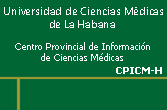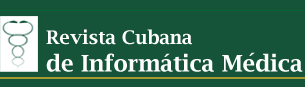



|
. Autores: Msc. Yulemi González Quesada 1, Ing. Daxel Madrazo Luk 2, Lic. Miguel Sautié Castellanos 31Centro Nacional de Genética Médica.
La Distrofia Miotónica (DM) es un trastorno neuromuscular. Este trastorno tiene una herencia y patofisiología molecular muy complejas. Se clasifica en dos formas principales: DM1 y DM2. Ambas son el resultado de una mutación dinámica y difieren en la severidad de los síntomas clínicos así como en la localización del defecto genético. Las afectaciones moleculares presentes en estas enfermedades, son atribuidas a la longitud y al tipo de los repetidos en el ARNm. Es de esperar que las diferencias en sus estructuras sean responsables de las particularidades de cada una de estas entidades. El objetivo de este trabajo estriba en tratar de explicar las diferencias entre los mecanismos fisiopatológicos asociados a la DM1 y DM2 a partir de las diferencias presentes en la cantidad y estabilidad de las estructuras secundarias formadas por los repetidos de CUG y CCUG de distintas longitudes. Fue utilizado el servidor Quikfold con el fin de modelar el efecto que tiene sobre las estructuras secundarias la variación del tamaño de estas secuencias repetitivas. Se obtuvo que estos repetidos pueden formar hasta tres estructuras probables caracterizadas por la presencia de lazos interiores que alternan con regiones doble cadena de C/G. Las estructuras formadas por los repetidos CCUG son menos estables que aquellas formadas por los repetidos de tripletes CUG. En estos últimos la estabilidad aumenta drásticamente con el aumento del número de unidades de repetidos. Esto último pudiera explicar algunas de las diferencias entre estas entidades como la necesidad de una mayor cantidad de repetidos para el desarrollo de la sintomatología y la ausencia de la forma congénita en la DM2. Palabras clave:
Distrofia miotónica, Expansiones, Bioinformática, Servidor Quikfold, Modelación, Estructuras secundarias, Molecular, Genética. Myotonic Dystrophy (DM) is a neuromuscular disorder with a very complex inheritance and molecular pathophysiology. It is classified into two main forms: DM1 and DM2. Both forms are the result of a dynamic mutation and differ in the severity of clinical symptoms as well as in the location of the genetic defect. The molecular disorders present in these diseases are attributed to the length and type of repeats in the mRNA. It is possible that the differences in their structures are responsible for the particularities of each of these entities. The aim of this study was to find an explanation for the differences between the pathophysiological mechanisms associated with DM1 and DM2 on the basis of the differences in the amount and stability of secondary structures formed by the CUG and CCUG repeats of different lengths. The Quikfold server was used to model the effect on secondary structure that has the variation of the size of these repeats. It was found that these sequences can form three possible structures characterized for the presence of interior loops and doubled stranded regions of C / G pairings. The structures formed by CCUG repeats are less stable than those formed by CUG triplets. In CUG triplet repeats the stability increases dramatically with the increase in the number of repeat units. This may explain some of the differences between these entities, such as the need for a greater number of repeat units for the onset of symptoms, and the absence of the congenital form in DM2. Key words: Myotonic Dystrophy, Quikfold server, Modeling, Secondary structures, Genetic, Molecular. |